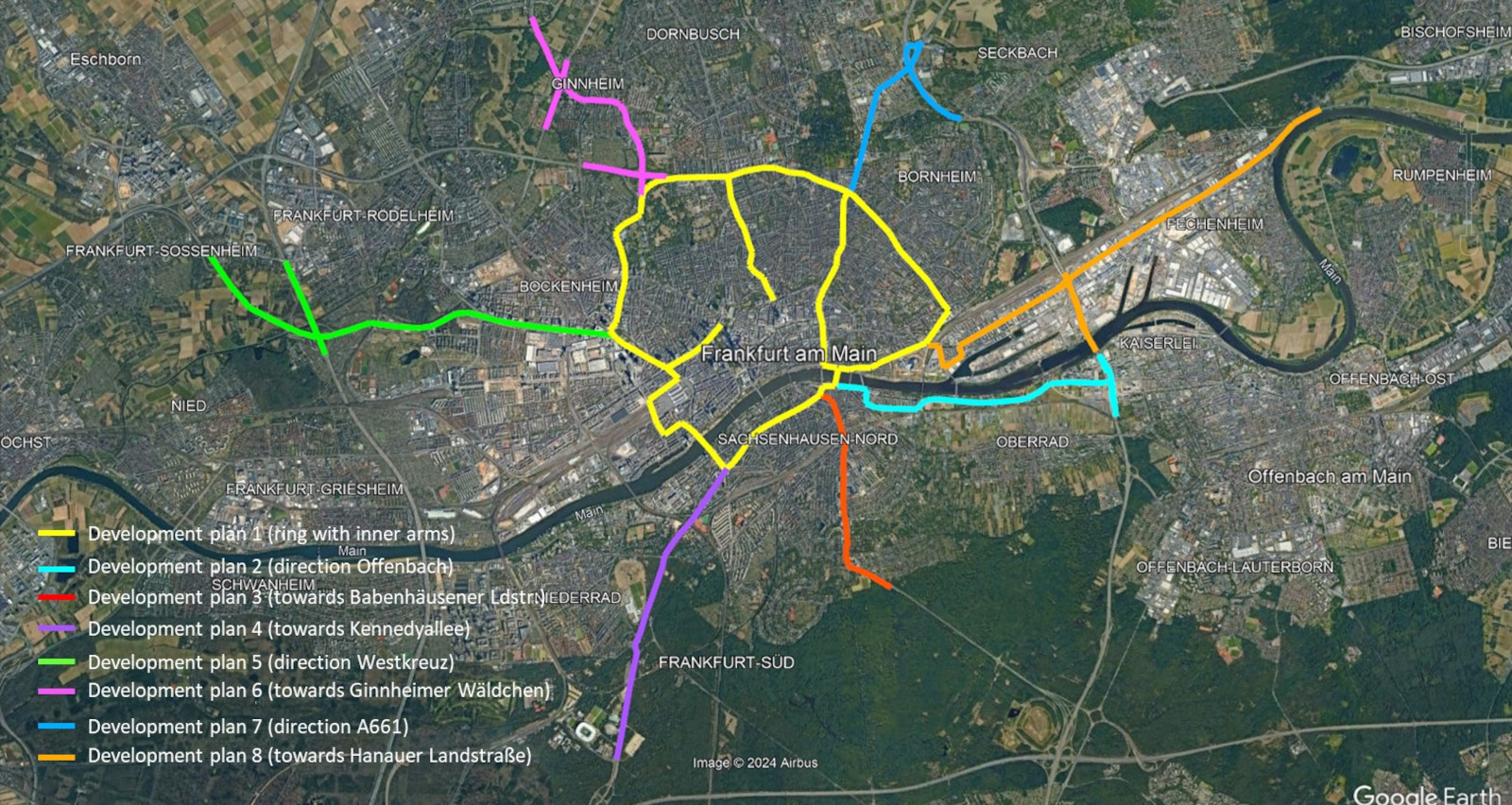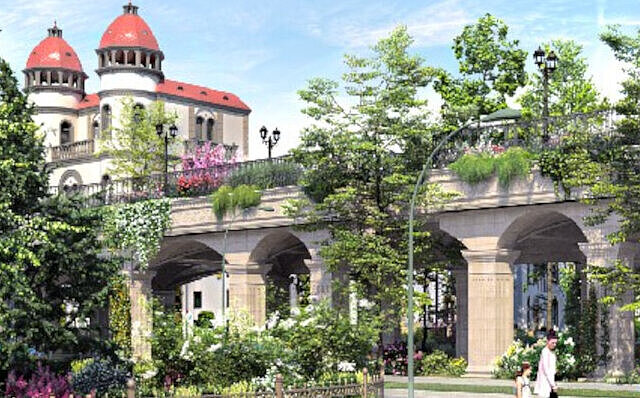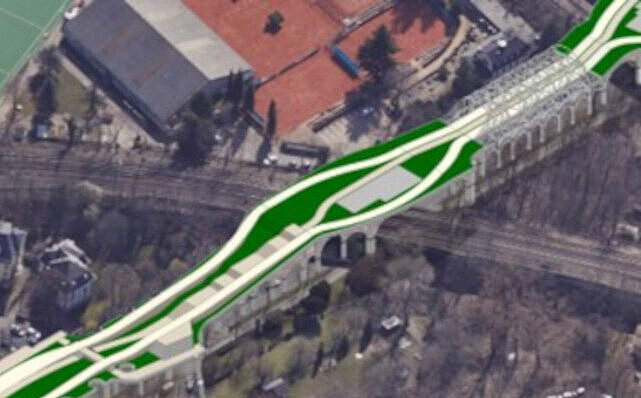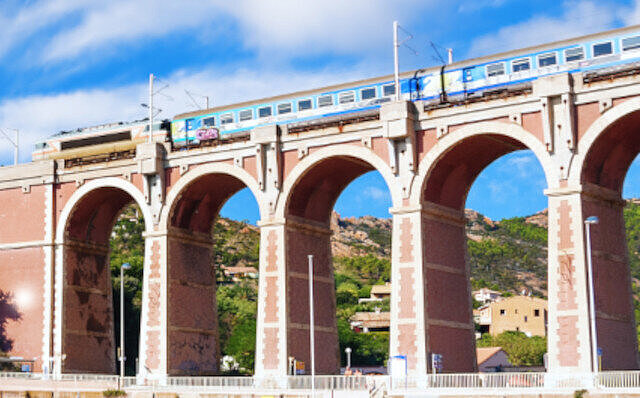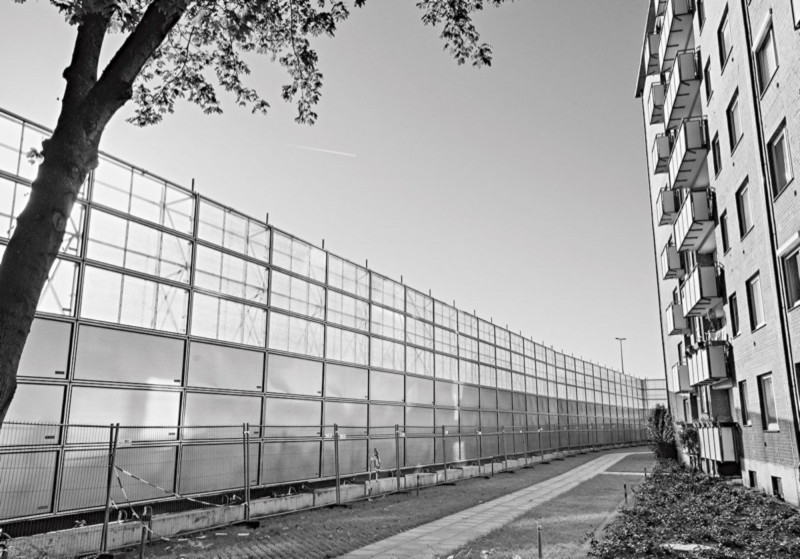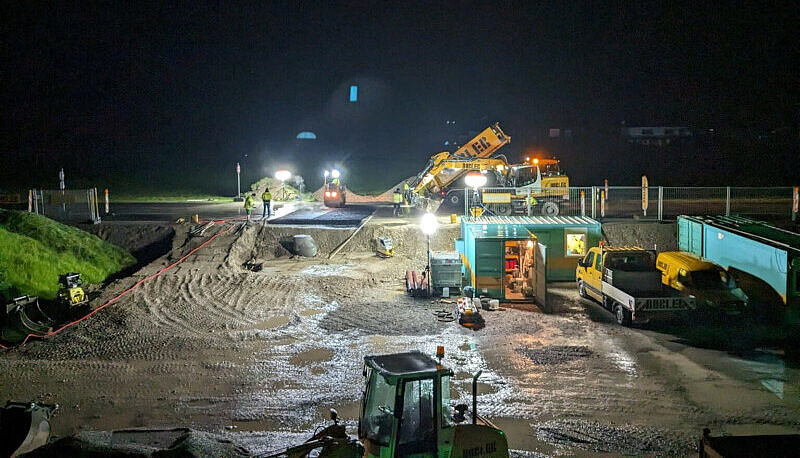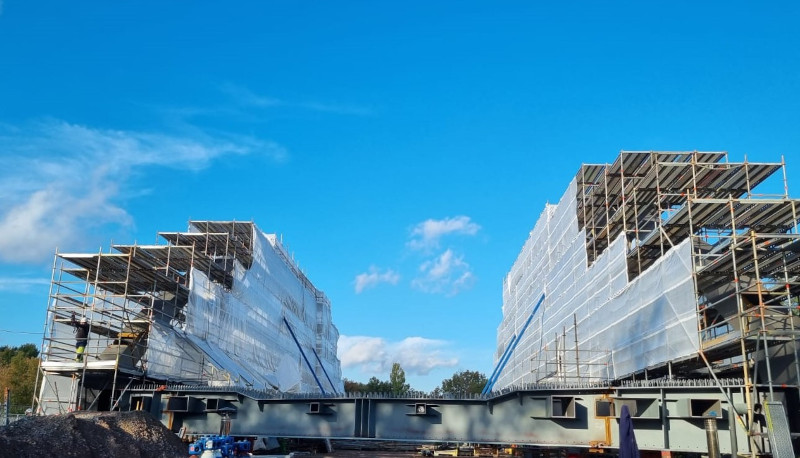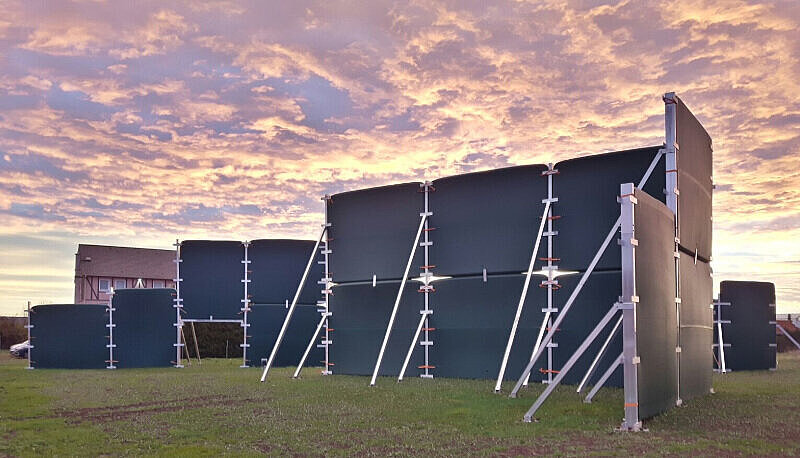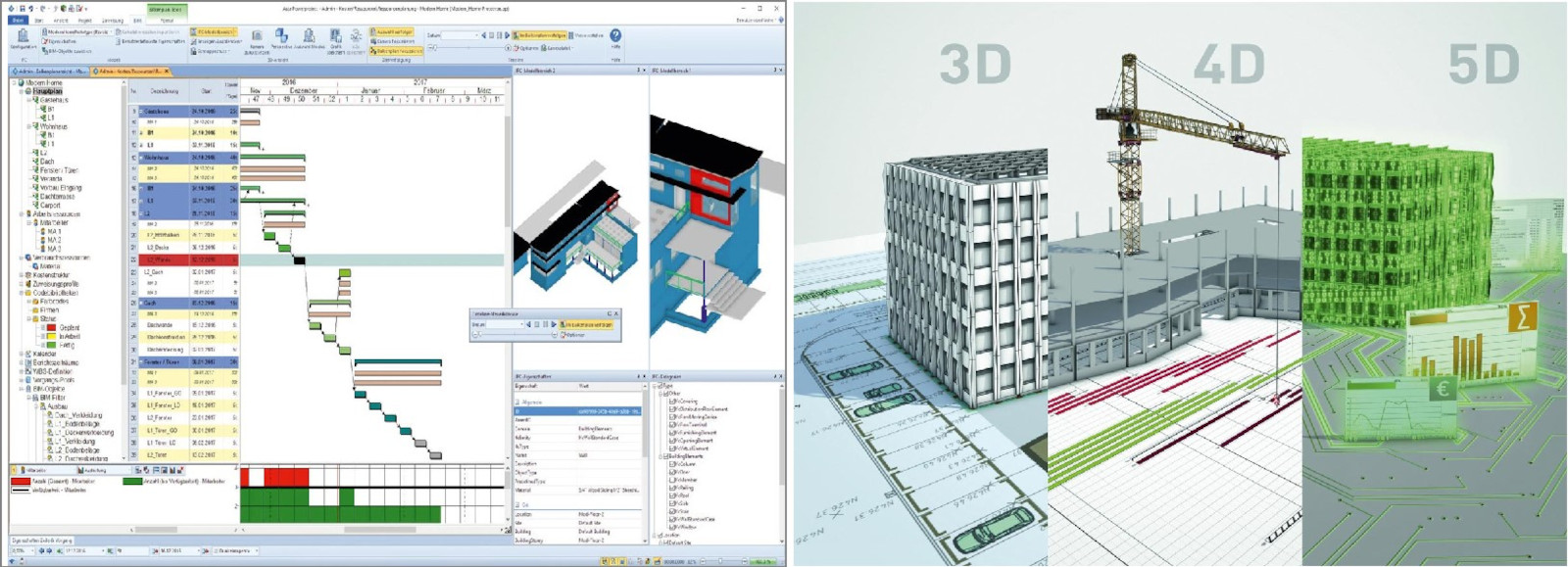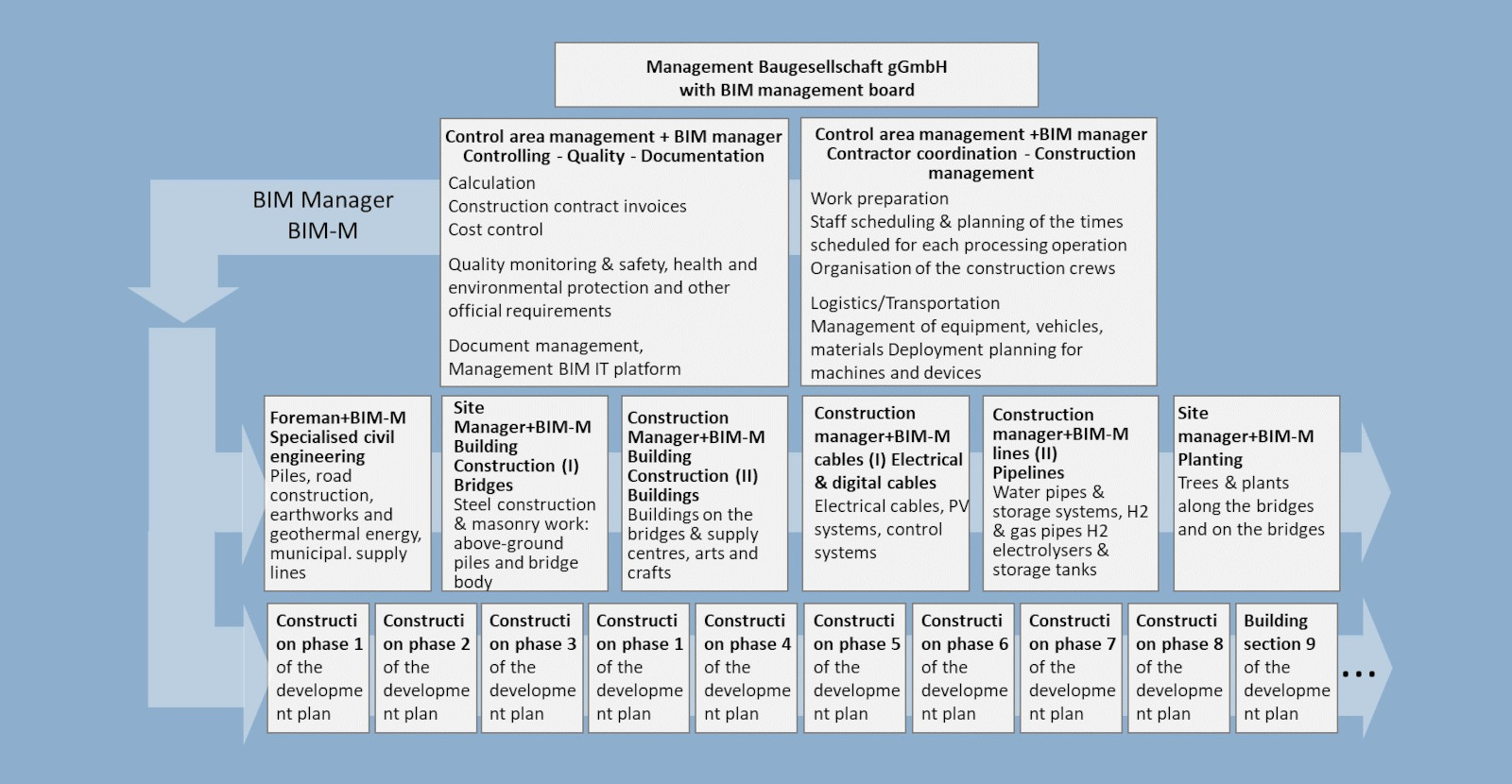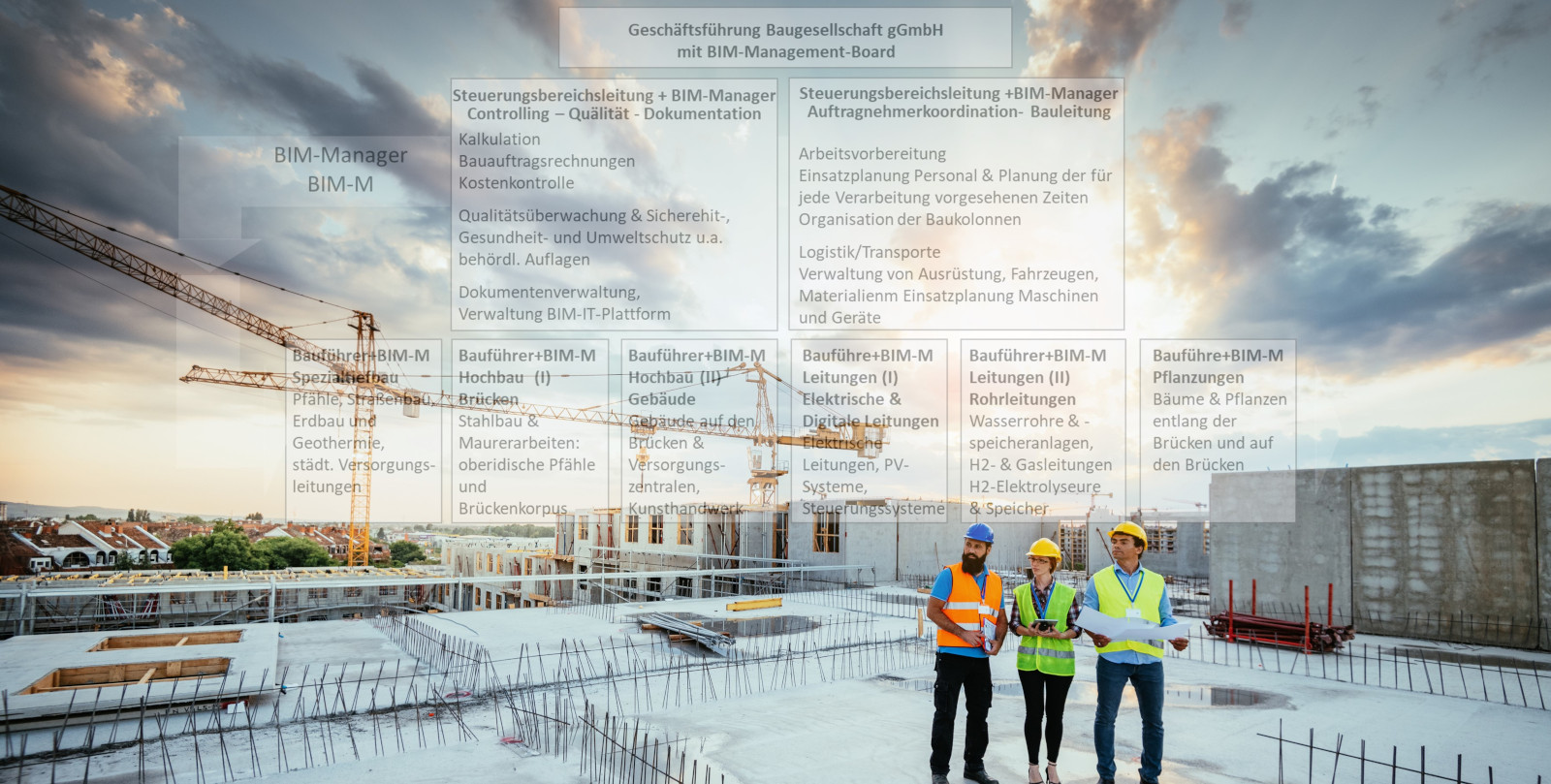The non-profit form of the construction company guarantees not only construction site management that is orientated towards the interests of the citizens,
but also a procurement policy that focuses on the promotion of skilled trades and the integration of the first graduates of the new Master Crafts Academy
Like its predecessor planning companies, the construction company for the construction of the Frankfurt Bridges is organised as a non-profit limited company. On the one hand, this ensures that the construction sites are equipped or managed with the highest degree of resident protection; on the other hand, it ensures that priority is not given to the cheapest providers when awarding contracts, but to those who (1) are commissioned in the most sensible way from a sustainability perspective or who (2) should be given preference with regard to training and promoting young talent or who (3) cooperate with science and research, etc. etc.
The question of which regions the contractors should come from is also relevant for the fulfilment of the non-profit objectives of Baugesellschaft gGmbH: The Frankfurt Bridges are to become Europe's Silicon Valley, and accordingly companies from the European cultural area (i.e. not limited to EU members) are given priority. I
In addition, not only large corporations should be commissioned for such a large infrastructure project, but also medium-sized and smaller companies should be given a chance: For the construction of the Frankfurt Bridges, there are trades that can only be fulfilled by a few large European companies, such as the construction of geothermal plants or the delivery of large reinforced concrete elements. However, the situation is different for smaller trades that require huge quantities, such as masonry, stonemasonry or wrought iron railings. Here, the intention is to award contracts to medium-sized and smaller companies that fulfil special quality criteria, such as those listed above, e.g. that they are training companies or that a particularly difficult traditional craft is still mastered.
As the construction industry throughout Europe is already suffering from a shortage of young talent, it is essential that the next generation of tradespeople be massively promoted by the state in the ten years before construction work begins and that the "Master Craftsmen's Academy", which is to reach its full size on the Frankfurt Bridges, be set up in temporary premises years before construction work begins and start training tradespeople from all trades.

